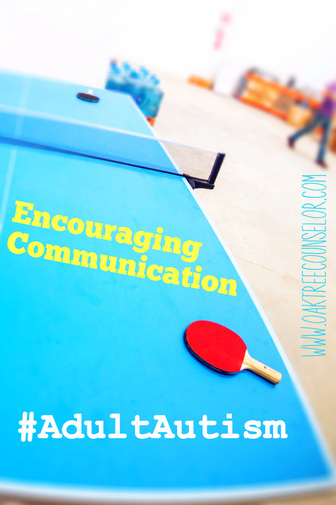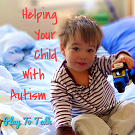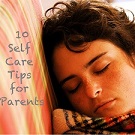 Photo credit: juanedc via flickr Photo credit: juanedc via flickr  There are so many books and resources geared toward children on the Autism Spectrum, but *gasp*, guess what? They grow up. I know, I know, that sounds incredible, but it's true. A child with autism will one day be a 40 year old with autism. I want to provide ideas that address this gap in resources. My last post discussed the principles I use in my office to encourage language and communication with children on the Autism Spectrum. These same ideas can be adapted for young adults on the Spectrum, as well as older individuals with Autism who might have difficulty with conversation, language and social interaction. DISCLAIMER: I am not affliated with the authors or websites mentioned here and have received no form of compensation to mention them. Where to StartHere is a review of the basic principles, I use in my office, based on Play To Talk by Dr. James MacDonald and Dr. Pam Stoika, and Greenspan's Floortime and DIR therapy.
These 5 strategies are taken directly from Play To Talk (MacDonald & Stoika, 2007). My last post reviews these strategies more thoroughly. Adapting Floortime® Strategies for Adults
So, my next purchase will be a small air hockey table for the office! :) I would love to hear your ideas in the comments. I'm always looking for ways to build better relationships with kids and adults with autism. Adapting Floortime® Strategies for Adults With AutismI am often trying to come up with creative ways to adapt these strategies for young adults on the Autism Spectrum, since there are far fewer resources for adults. So, I reached out to Dr. Lauren Tobing-Puente, a licensed psychologist in New York, who also uses Floortime strategies. She had some interesting ideas that I included in the list. First, start with the person's special interests. Whatever that might be, Lego® bricks, trains, Dr. Who, birds, insects, lining things up, organizing by color, these special interests will provide the easiest way "doorway" into their world. Don't stress over whether or not it is age-appropriate, since your goal is to increase back-and-forth turn-taking and communication. Avoid teaching the "right" way to play, as this tends to make the interaction less fun and lead to less communication. Dr. Tobing-Puente encourages parents to pay close attention to special interests and what the person finds interesting right now. She also mentioned that if they are initiating verbally, then it is ok to respond verbally. If they seem overstimulated or frustrated, trying toning down, using less speech, and responding more with nonverbal interactions. She also mentioned that sensory-based activities are just as important for young adults, as they are for children; since, many adults have difficulties with sensory processing. While, it might seem easier to apply these "play" strategies to younger children, since their interests and toys seem more natural to play with, a little "outside the box" thinking will give you plenty of ideas.
|
Nikki Schwartz,
|




 RSS Feed
RSS Feed
